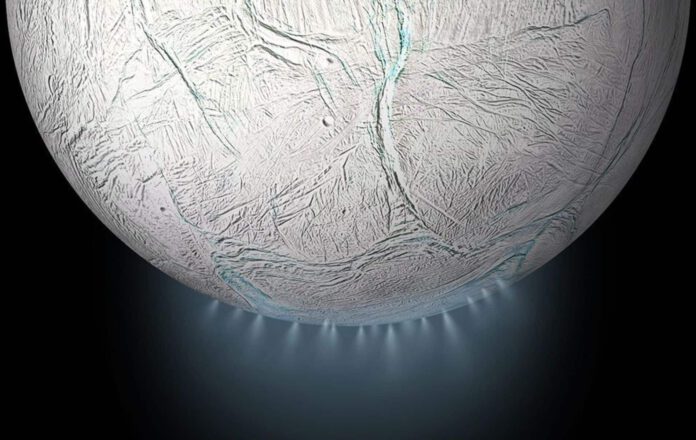
The Potential of Life Beyond Earth
The plumes of water expelled from Enceladus, Saturn’s icy moon, could contain the building blocks of life. Researchers now have evidence to suggest that we are capable of detecting these, should space probes be dispatched to collect samples.
In the quest for extraterrestrial life, many hopeful eyes are fixated on Enceladus. Despite its icy surface, the pint-sized moon is home to a subterranean ocean of liquid water. Furthermore, geyser-like plumes, rich in a variety of organic compounds, have been observed erupting from fractures within its frozen crust. However, the high-speed at which these plumes are ejected has raised doubts about the durability of these organic compounds. A recent study, however, paints a more positive picture.
Discoveries by Cassini
During its twenty-year-long mission, NASA’s Cassini Space Probe discovered that Enceladus was releasing water into space at speeds of about 400 m/s. These dynamic eruptions provide an excellent opportunity to gain insights into the nature of Enceladus’s oceans, potentially revealing signs of life. Until now though, it remained uncertain whether organic substances remain intact when they are jettisoned away at such high velocities.
The Role of the Aerosol-Impact-Spectrometer
In an attempt to answer this question, scientists made use of an aerosol-impact-spectrometer, a unique device designed to study the collision dynamics of individual aerosols and particles at high speeds. As researcher Robert Continetti explains, this instrument possesses a unique capability to select individual particles and either accelerate or decelerate them to predetermined speeds. These selected particles, ranging in size from just a few micrometers in diameter to hundreds of nanometers, can be observed to gain insights into how they scatter and how their structures transform upon impact.
The Experiment
For the experiment, ice grains were first created using electrospray ionization. This technique involves forcing water through a needle under high voltage, which causes water to break up into increasingly smaller droplets. These droplets were then exposed to a vacuum, causing them to freeze. The team tracked the movement of these ice grains through the spectrometer, calculating their mass and charge, and timing the exact moment of their impact to the nanosecond.
Impressive Findings
The findings suggest that amino acids, crucial components of life, remain intact even after colliding at velocities reaching 4.2 km/s. This means that these significant molecules could survive the swift ejection from Enceladus’s water plumes. The result bolsters the idea that these balls of life could be detected when spacecraft collect samples. “Understanding the type of life possible within our solar system requires knowing whether the molecules within the samples are damaged or not”, Continetti remarks. “Deciphering life’s defining features is therefore a viable task with Enceladus’s water plumes.”
Road Ahead
This study has profound implications for the upcoming Europa Clipper mission, which is set to launch in 2024 and explore Jupiter. Like Enceladus, Europa, one of Jupiter’s largest moons, is also an ocean world and has a similar icy composition. Scientists hope that the Europa Clipper or future missions to Saturn could identify specific sets of molecules in the ice grains pointing towards the existence of life in these moons’ subterranean oceans. Therefore, it is paramount that these molecules remain intact despite being rapidly expelled from the moon and can be successfully collected by a space probe. As it turns out, signs of life can indeed be detected successfully on these icy moons, bringing us one step closer to resolving the enthralling question of the existence of extraterrestrial life.











